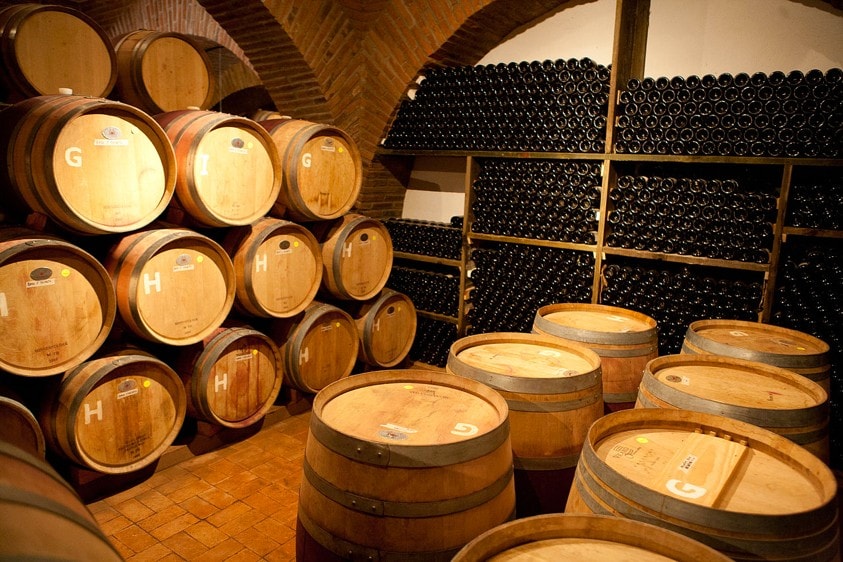
- Nov. 09
- Richard Parker
Top 10 Alternative Investment Strategies
These days the stock market is enough to give any forward-thinking investor a case of nervous tension.
The political landscape is one that is increasingly affecting an investors ability to spot a good trend; whether that’s the noise emanating from the Trump Administration or any seemingly insignificant piece of news about Brexit. Volatile, indeed.
As difficult as things can seem, there is light at the end of the tunnel – a light which has been turned on by savvy investors who have avoided the more traditional asset classes of stocks, bonds and cash and turned their hand towards, ‘alternative investments’.
That’s not to say that investors should panic immediately; cash out their savings accounts and drop everything into these alternative strategies. On the contrary, in fact, most financial experts conclude that these options are excellent to run alongside your current options.
Whilst it is true that alternative investments are often seen as the playground for professionals or higher earners, it is becoming a more well-trodden path for the everyday investor.
Art
Not to everyone’s taste but art can be an absolute blessing; price fluctuations in the art market aren’t reflected in the peaks and troughs of traditional asset classes. During the latter half of the 20th century, the value of art pieces increased at an average of nearly 11% per annum.
Buying art takes capital and patience. But, whilst it may not run seamlessly with the stock market, art has its own highs and lows. For example, during the 1980’s due to a smattering of investment from Japanese investors, and again in the mid-2000s, fine art sales soared. But during the 2008 financial crisis art sales seriously slumped.
Despite this though, if you can sit tight and wait for things to pick up whilst appreciating the aesthetic beauty in the meantime, you’re in a good position.
Wine
Investing in fine wines can expect a yield of between 5 to 20% annually over a long-term period and whilst fine wine general tends to fluctuate year-on-year, the most sought-after brands and vintages tend to increase exponentially when supply begins to deplete.
Alcohol experts and connoisseurs are very, very fussy, so it’s important that if this is an avenue you’re interested in, you’re keeping abreast with the latest trends.
Wines from the Bordeaux region are generally sound investments since they are coveted amongst collectors. The same is the case for Burgundies, Italian Super Tuscans, Spanish reds and California cabernets.

To make wine investment worthwhile, you’ll need to invest a fairly sizeable chunk in order to see some good returns. On top of this, the wine must be stored properly – any expert worth his or her salt will know if the wine has been stored incorrectly. You can buy coolers or even convert entire rooms to store your wine or contact a company that can store it properly on your behalf.
Commodities
Commodities often include resources like crops, livestock, fossil fuels and precious metals like copper. Fair warning though the commodities market is one of the most volatile, given that unpredictable world events and natural disasters have a direct impact on trade prices.
Having said this, commodities represent a good option for long-term investment. For example, when the economy collapsed in 2008, prices on foods and oil were driven up, which meant commodity prices went with it. Several commodities like oil and corn climbed in 2010, so investors who had bought in previous years saw big returns.
The best way to take advantage of rising prices of commodities is to look into ETFs (Exchange Traded Funds). These are mutual funds that buy a range of commodities or invest in businesses that produce them and thereby decrease the risk of uncertainty.
Coins
We’re living in an age where contactless payments and digital technology rules above all else, and in some cases, it’s a great thing, but doesn’t it make money feel rather tactless and devalued?
This is why many are now deciding to diversify their portfolio with coins and if this is something you may be interested in doing, it’s important to remember a few things.
You should aim to invest in what is known as, ‘bullion coins’ and these include the Britannia, the American Gold Eagle, the Canadian Maple Leaf, South African Krugerrand and The Queen’s Beasts coins.

If you know your market, then it could be a very profitable venture. Collectors coins or ‘numismatic coins’, are known to sell at very high prices to expert collectors all over the globe and if you’ve invested in the right things at the right times, you could be in for a pretty hefty payday. Having said that, if you are a newbie to all things round and shiny, stick to the bullion.
It’s very tempting to handle the coins once they’re in your possession, but it’s crucially important to remember that any scratch, smudge or fingerprint could damage and devalue your investment.
Gold
As mentioned we’re living in a political and economic whirlpool, both locally and internationally; pushing many to ask, ‘Is gold a worthwhile investment?’ The short answer is yes; the long answer is as follows:
According to the gold price forecast, 2017 is looking like a good year for gold. But, it is worth understanding why they have predicted this before making the plunge.
Unlike other assets, gold has generally tended to maintain its value. Throughout the history of gold, it has commanded attention and is a way of passing on wealth from one generation to the next, which it is an excellent buffer against inflation. As the cost of living increases so does the cost of gold. During the past five decades, investors have seen gold prices rocket when the stock market is plunging during high-inflation.
Hedge Funds
Similar to other investment funds, like mutual funds, hedge funds collect from different investors and funnel the communal capital into various investments in order to increase ROI. Hedge Funds have a lot less red tape compared to other funds, so it means that managers are able to choose from a very broad range of investment options such as stocks, commodities, derivatives, futures and options amongst many others.
This kind of freedom often results in positive results for investors and managers and whilst there is much less red tape in terms of legislation, there is a rather large barrier to entry in terms of the minimum investments, which could be upwards of five hundred grand, and pricey fee structures.
Private Equity
This is the act of investing in a company that doesn’t issue public stock. Investors contribute capital to a company and then receive returns on investment once the company reaches a certain stage, this is often when the company goes public.
Private equity is often used as a means of capital to start companies in high-tech fields such as telecommunications, biotech and alternative energy.
The success of such an investment often depends on how well a start-up does, which makes it a little bit more of a risky option, even in good financial climates. This risk often means that those who put the most into the company are hands-on in creating management structures, marketing campaigns and product sales pitches.
There are a couple of different options available to you if you choose to take on such an investment, but probably the least risky is to work with a specialist private equity firm and join with a consortium of investors, however, remember that the buy-in will depend on the size of the start-up.
Venture Capital
A specific type of private equity, which focuses entirely on start-up businesses that are at an extremely delicate; extremely early stage in business development. Firms provide start-up capital for these companies and normally see an ROI when the company goes public or when another party purchases it.
This kind of investment can take up to a decade to see results, if at all. Investing in such a young and undeveloped company at such an early stage is risky. However, when you invest your money the firm will spread that investment across multiple ventures to lower risk factors.
Photography
An investment that previously would’ve been classed within the art category, but these days investments into photography are becoming more popular. And many experts believe there’s one good reason for this: collectors value originality.
Photographers now limit their productions to just a few images that they sign. There’s an assumption that unlike art pieces, photographs are in endless supply, but how often is that really the case?
Collections by photographers are limited to just five to ten prints and the negatives, which are kept by the artist. The whole collection is produced at the same time, so investors are now fully aware that there will never be more produced.

Just like art pieces, investors can keep them aside when the market is slowing and make their mark when buyers are looking to purchase more extravagant items.
Property
Historically, the property market has provided one of the most popular alternative investment opportunities. The 2008 financial crisis hit the property market hard and has made a lot of people nervous about investing; the same is true for the Brexit negotiations in the UK as a lot of landlords are becoming nervous, pulling the trigger and trying to sell up.
Buy-to-let properties usually provide a steady, reliable income if you can find the right tenants, but things like tax, upkeep and unforeseen circumstances, like court fees, should things go wrong with the tenants, can often seriously limit profit.
What many people now choose to do is purchase properties at auctions or through traditional means; fix them up and sell them on for a tidy profit.
All investment portfolios should be diverse and should all be able to run alongside each other, so that when one option may be going slightly southwards, other options may be able to balance things out.
Investing takes time and effort and nothing should be done on the spur of the moment, so take your time and make the right choices for you.



